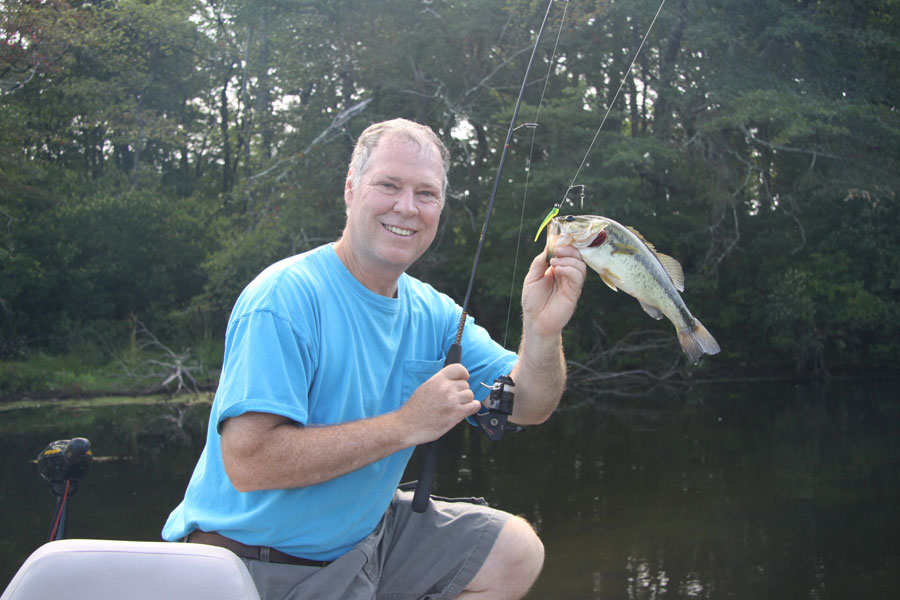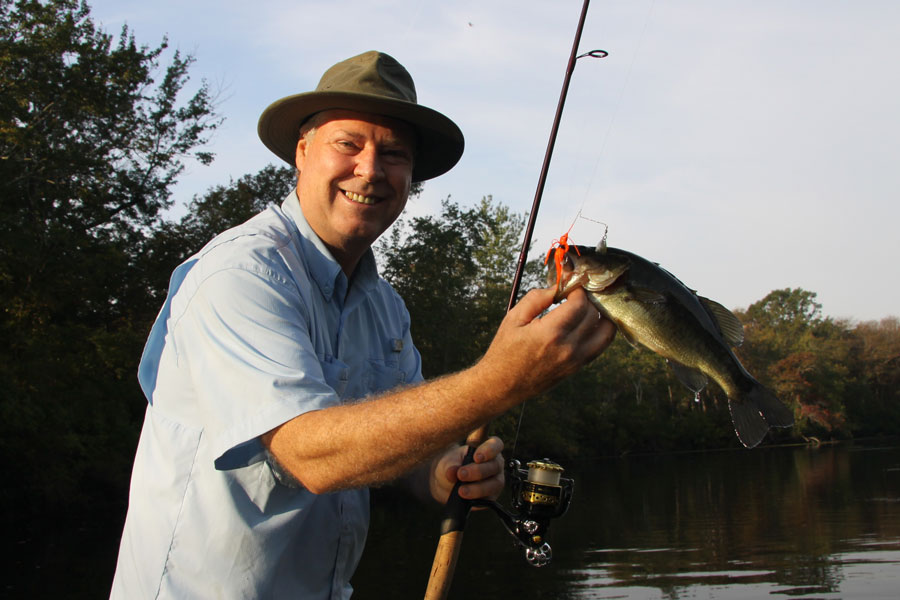
Scented, salted and flavored soft plastic baits are all the rage these days. With lure manufacturers pumping out a seemingly endless array of new styles, patterns and models an almost daily basis it’s hard to keep up with all the options. – and it’s even easier to overlook some of the old standbys that have served well for years or even decades on the freshwater front.
While there can be no denying the effectiveness of all the new softies, using all the fish-catching tools in your tackle box can really increase overall productivity and keep you feeling fresh and excited as the season progresses. Thus, although I try to experiment with something new on most trips, I also make sure to throw a few old standbys during the course of the day.
By Tom Schlichter
One of my longtime favorite summer lures for freshwater action is the spinnerbait. Just 20 years ago, this lure style was thrown by nearly every bass angler on the planet. Today, however, I notice they are being used less frequently. That’s too bad, because spinnerbaits remain productive under a wide range of conditions, can be fished from the surface to the bottom, and catch everything from largemouth and smallmouth bass to pickerel, crappies, perch and even sunfish. They are, in short, one of the most versatile lures on the freshwater front.
DECONSTRUCTING SPINNERBAITS
Although spinnerbaits appear simple in design, there are several elements to consider when making your selection before heading out on your favorite fishing hole. Take the blades, for example. There are three primary styles, each with different strong suits.
In clear water where bass and pickerel use sight as the key element in locating prey, narrow willow leaf blades are a great choice because they throw off plenty of flash. Rounded Colorado blades throw off less light but work well in discolored or murky water because they give off stronger vibrations. Indiana or tear-drop style blades, which fall in-between these other two styles, offer a fair degree of flash with a decent level of vibration, making them a good compromise under mixed conditions.
Skirts and grub tails provide color and contrast to a spinnerbait, and choosing an appropriate shade for the environmental conditions encountered is key. Choose bright colors like white, orange or chartreuse on sunny days, pale green or yellow on cloudy days, and black or purple in low-light situations. If you think big bass and pickerel are targeting large baitfish, or simply want to present a fuller, larger target, combine a skirt and grub by sliding the latter up onto the hook and under the skirt. Matching the grub color to that of the skirt is usually a good idea, but I must admit to occasionally contrasting the colors. A white skirt and red grub combo, for example, works well for me when the water is chilly. Purple and red is a good combination just before dark.
Even the arm of a spinnerbait is worthy of consideration when it comes to fine-tuning your presentation. Thinner arms work well with lighter lines and allow a little flex as the blades spin to throw off unique flash and vibrations. Thicker arms, however, stand up well to banging structure, snagging fallen timber and being pounded by big fish time and again.
I like to toss small spinnerbaits with wire thicknesses of 0.03 to 0.04 on four- to six-pound test spinning setups, especially when working in open water, as they draw plenty of aggressive strikes from bass to bluegills. On the other hand, in heavy weeds, casting to shoreline brush or slowly retrieving spinnerbaits across sunken timber, requires heavier spinning gear or a bump up to 12- or 14-pound test conventional setups and a spinnerbait arm thickness of 0.04 or 0.05. Some anglers will even go to titanium arms for working in heavy cover, but I think the steel arms provide a little better action on the retrieve.

SIZE MATTERS
Of course, size does matter. Bigger spinnerbaits seem to turn on the largest bass and pickerel while smaller lures provoke more strikes but fewer trophies. When choosing a spinnerbait size, the starting point should be deciding what you want to target. If it is fast action with a variety of species, a 1/8- or 1/4-ounce spinnerbait is ideal because it will fit in the most mouths. Larger spinnerbaits cull out the sunfish, crappies, yellow perch and smaller bass and pickerel, allowing you to concentrate on catching the kings and queens of the pond. Try tossing a small spinnerbait to get a quick feel for the aggressiveness of the predators on any given day, then switch to something larger once you’ve caught and released a few fish and want to get serious about hooking hawgs.

BASIC PRESENTATIONS
Spinnerbaits are exceptionally versatile, and just about any presentation that keeps the blades turning will eventually draw some strikes. Still, there are three retrieves that can cover all the bases: buzzing, standard and slow-rolling.
Buzzing spinnerbaits brings exciting topwater strikes and seems to work best on calm, overcast days when the air is heavy and the lake is still. With this presentation, begin reeling quickly before the lure even hits the water. The idea is to retrieve your offering just below the surface so that it pushes a bulging wake on the return. Alternate speeds slightly so that the blades occasionally break the surface and then slide below again without allowing the wake to fall off.
The standard spinnerbait retrieve is just what you might expect. Cast out and retrieve at a steady, medium pace. Vary the speed slightly from cast to cast until you find a pace to which your quarry responds. Keep the lure anywhere from six inches below the surface to a foot above the bottom. This retrieve works especially well at mid-day, during spring and fall seasons, and in open water.
Slow-rolling is a great way to probe deeper waters for sulking bass and big pickerel. The idea behind this presentation is to drag your lure slowly across submerged structure like trees, wrecks or large rocks. Try to bump any prominent piece that rises off the bottom. You’ll lose some lures with this approach, but you’ll also hang some awesome lunkers.










